Idea by
Dominika Wilczyńska + Barbara Nawrocka
miastopracownia
Call for ideas 2021
HYBRID URBAN FORMS
HYBRID URBAN FORMS
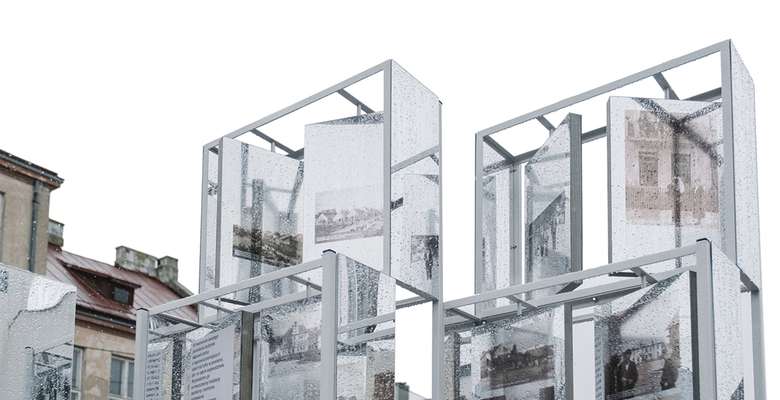
- Systemic changes
A hybrid installation combining familiar functions, but remaining in opposition to their imagined and expected form and usage, is a response to the need for creating an alternative meeting space.
Our starting point was the idea of a bench as an archetype of meeting and being in public space. We believe that starting points are meant to mutate and/or grow conks on their trunk. The first incarnation is a modular musebench, which can be rearranged and repurposed by changing the configuration of the screw twisted modules.
Cultural institutions and neighbourhood meeting centres are undergoing a pandemic freeze. We propose a scenario in which the function of the building continues: it spills outward, onto the square. Engaging the cultural and integration function in the public open space ensures visibility, accessibility, free availability, and inclusivity.
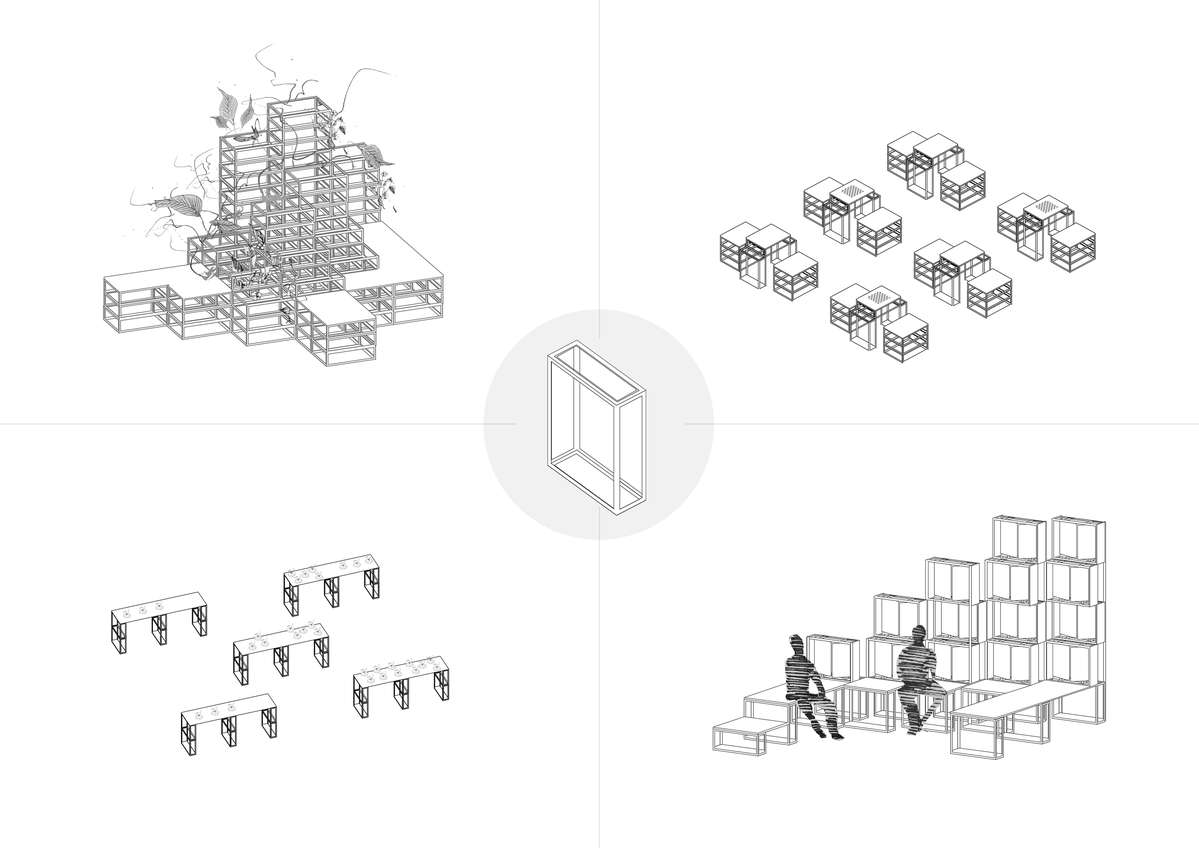
This is not a bench. This is not an open-air exhibition. The musebench is a hybrid. It is also a form in which modules can be rearranged in another configuration or multiplied to perform other functions. In spring, we will make a vertical garden-bench. In summer, we propose to turn it into a street market stall. It is a process and an experiment.
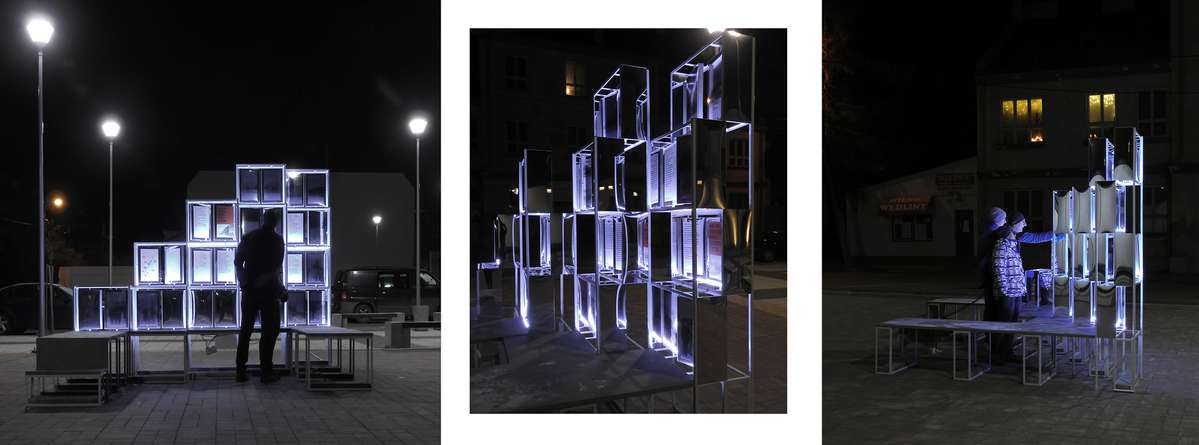
The panels rotate. The photos are glued onto the mirror. You are expected to observe, look in, sit, turn, and touch. The musebench is lit at night not just for aesthetics but also for safety.
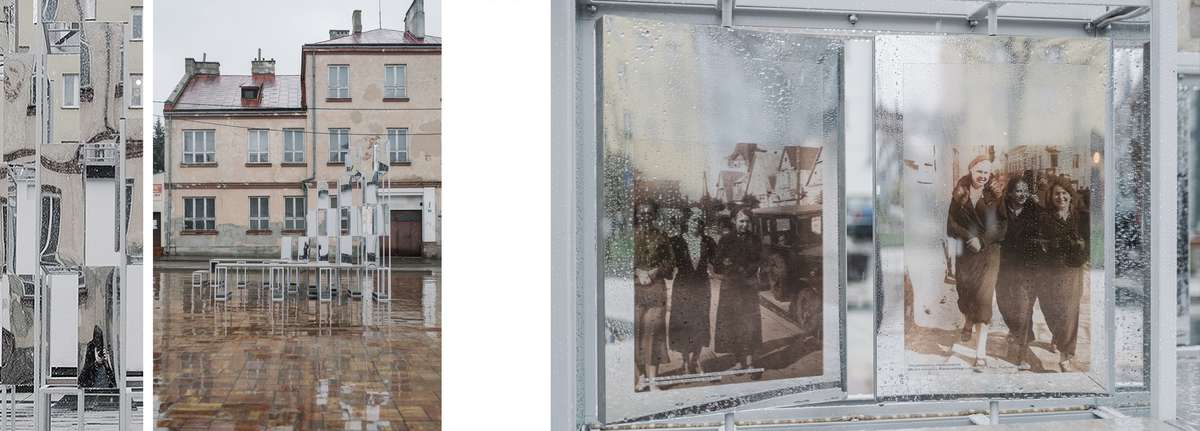
This hybrid is built on the idea of meeting and working together. The first meeting was a group founded on the Internet, where we collected old photos of the town among the inhabitants. This exhibition is a grassroots, collective archive, a neighbourhood photo album. The second meeting involved asking the residents what the installation should look like. The idea of the mirror kaleidoscope effect came from them.
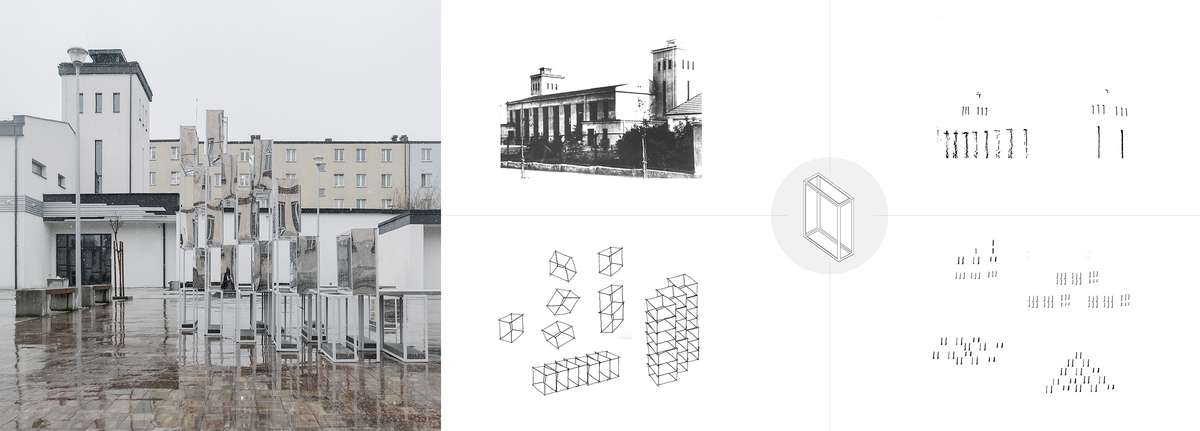
Proportions of the designed modules and its rhythms are derived from the surrounding. The project is located in a very small town, as we believe it to be the best space for testing innovative social and spatial solutions. Art and design should not be reserved for the metropolis alone.
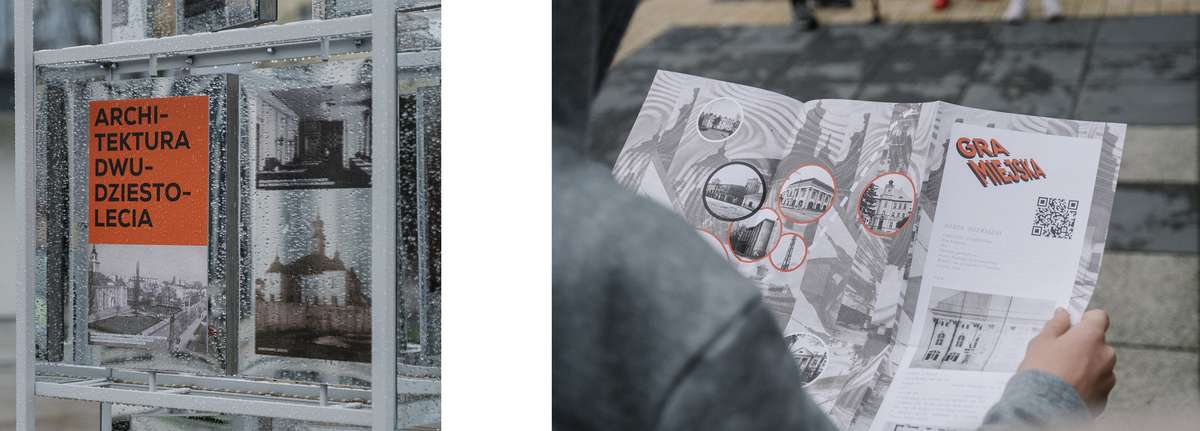
Hybrid Urban Forms were built in Ostrow Mazowiecka in Poland, as a part of the project Infrastructure of Independence: Ostrow Mazowiecka: Odkryj Ostrow organized by National Institute of Architecture and Urban Planning and the Pilecki Family House Museum in Ostrow Mazowiecka // photos: Michał Sierakowski (NIAiU), Dominika Wilczyńska // video thanks to the courtesy of TV Ostrow
HYBRID URBAN FORMS
HYBRID URBAN FORMS

- Systemic changes
A hybrid installation combining familiar functions, but remaining in opposition to their imagined and expected form and usage, is a response to the need for creating an alternative meeting space.
Our starting point was the idea of a bench as an archetype of meeting and being in public space. We believe that starting points are meant to mutate and/or grow conks on their trunk. The first incarnation is a modular musebench, which can be rearranged and repurposed by changing the configuration of the screw twisted modules.
Cultural institutions and neighbourhood meeting centres are undergoing a pandemic freeze. We propose a scenario in which the function of the building continues: it spills outward, onto the square. Engaging the cultural and integration function in the public open space ensures visibility, accessibility, free availability, and inclusivity.
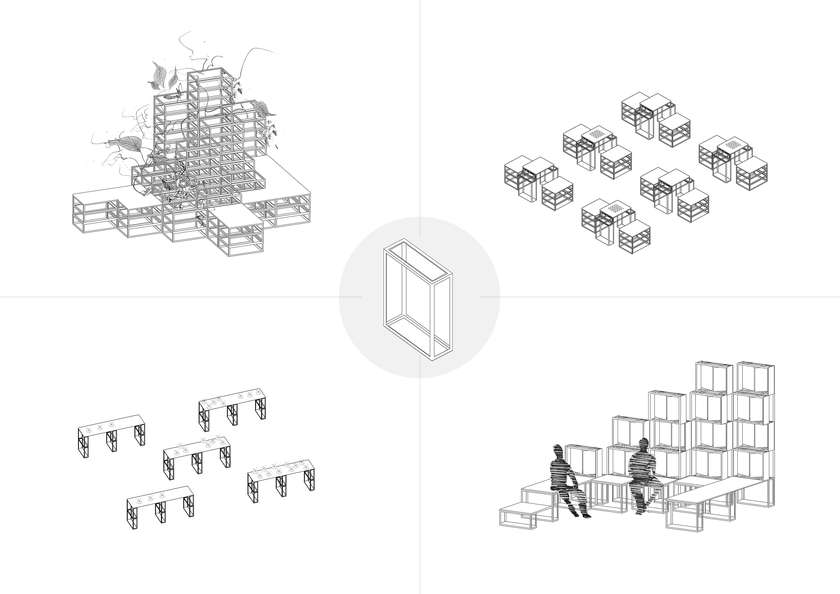
This is not a bench. This is not an open-air exhibition. The musebench is a hybrid. It is also a form in which modules can be rearranged in another configuration or multiplied to perform other functions. In spring, we will make a vertical garden-bench. In summer, we propose to turn it into a street market stall. It is a process and an experiment.
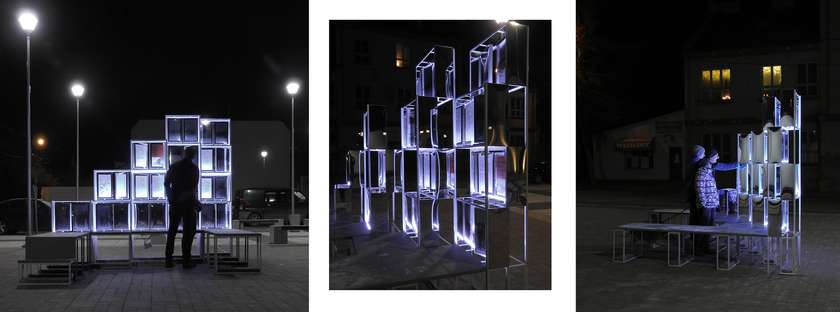
The panels rotate. The photos are glued onto the mirror. You are expected to observe, look in, sit, turn, and touch. The musebench is lit at night not just for aesthetics but also for safety.
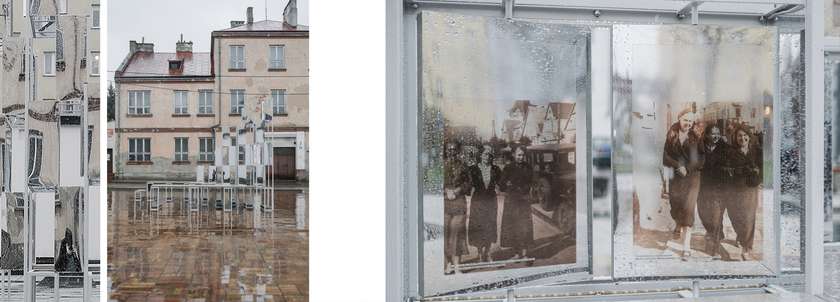
This hybrid is built on the idea of meeting and working together. The first meeting was a group founded on the Internet, where we collected old photos of the town among the inhabitants. This exhibition is a grassroots, collective archive, a neighbourhood photo album. The second meeting involved asking the residents what the installation should look like. The idea of the mirror kaleidoscope effect came from them.
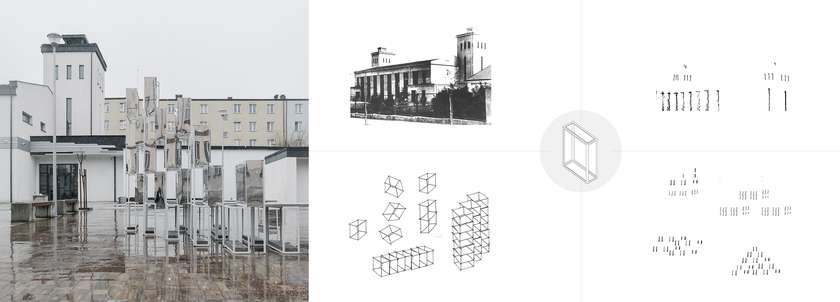
Proportions of the designed modules and its rhythms are derived from the surrounding. The project is located in a very small town, as we believe it to be the best space for testing innovative social and spatial solutions. Art and design should not be reserved for the metropolis alone.
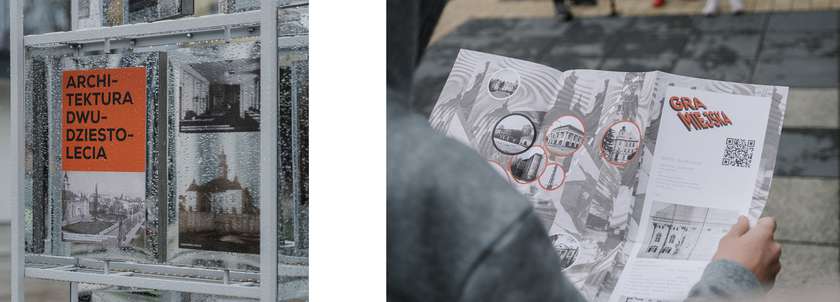
Hybrid Urban Forms were built in Ostrow Mazowiecka in Poland, as a part of the project Infrastructure of Independence: Ostrow Mazowiecka: Odkryj Ostrow organized by National Institute of Architecture and Urban Planning and the Pilecki Family House Museum in Ostrow Mazowiecka // photos: Michał Sierakowski (NIAiU), Dominika Wilczyńska // video thanks to the courtesy of TV Ostrow